There is no short supply of free horror games. Hell, the rise of reaction videos in recent years has actually brought a surge of them. People have raced to to make a videogame that’ll scare the pants off their favorite YouTubers so they can watch. But that’s also a problem: a lot of these small, free horror games go for the cheapest thrill to achieve their goal. Yes, the jump scare.
It is with that in mind that the 20 free horror games below have been selected. We prefer creep outs, an intense sense of dread, the kind of horror that lurks as you tuck yourself into bed. We want a scare that’ll last longer than two seconds. That said, there are a couple of jump scares even among these picks—it’s hard to avoid completely—but they are at least tasteful and used sparingly.
Right then, it’s Halloween, you’re ready to be scared, and we have 20 horror games that you can play right now without spending a penny. Turn off the lights, make sure the house is silent, and then begin …
The Uncle Who Works For Nintendo (Michael Lutz)
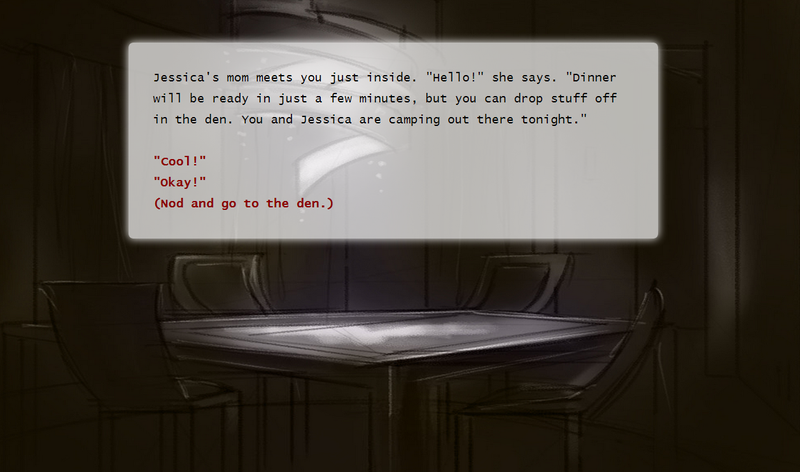
Michael Lutz’s The Uncle Who Works for Nintendo mines a rich vein of folkloric horror. It feels like something you’d hear around a campfire; that urban legend quality is built into its DNA. Released just as Gamergate began to froth and wail its abyssal song, Lutz’s game finds terror in an unreal schism carved into the safety of its characters’ domestic lives; one heralded by good old Nintendo. Dig the careful use of sound to amplify spooks.
Compositions (Nuprahtor)
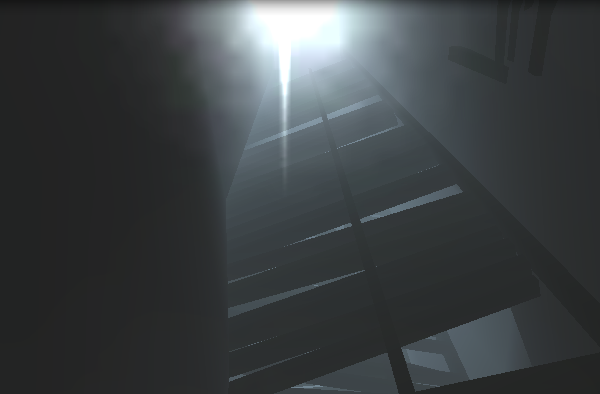
Nuprahtor might be the closest to an artist that horror games have got. His early series of compositions are singular and sublime. Each of them seems to have been designed around a perfect moment of terror, as if he started with a painting and then worked out the steps leading up to its arrangement, with the player at the center. Unexplained, subtle, and short, each of the compositions manage to be haunting in their own unique ways. No one else has created horror games quite as pristine as this.
The House Abandon (No Code)
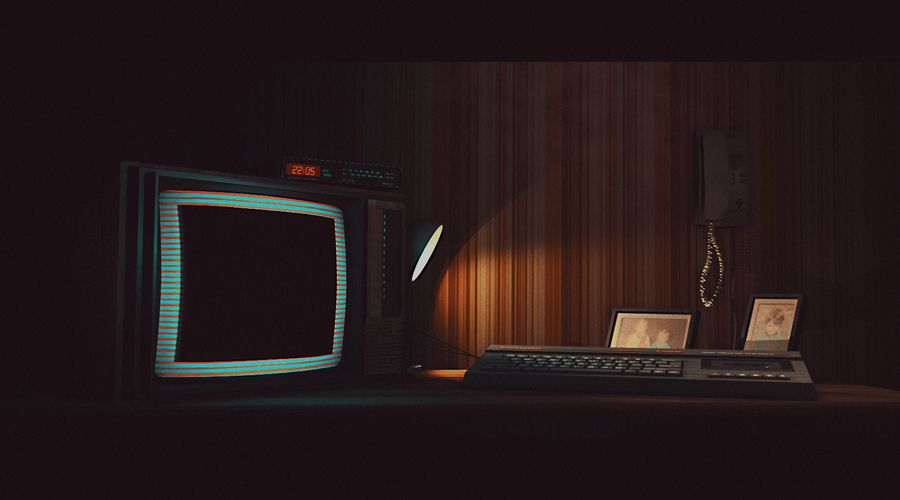
Designed by No Code, a studio led by Alien: Isolation (2014) UI artist Jon McKellan, The House Abandon is a text adventure played within a chunky old PC. The same feel for awful obsolete tech that characterized Alien: Isolation forms the backbone of this brief creep-out, which has fun fucking with you in clever ways. One tip: check the kitchen!
Cyberqueen (Porpentine)

Porpentine’s Cyberqueen is an unparalleled exercise in vomitous biopunk, the prize corpse flower in the decadent garden of Twine body horror. It’s got all the linguistic feats of strength that characterized her other text-based game Howling Dogs (2012), but marshaled in service of a scalpel-sharp, needle-focused homage to System Shock (1994), H.R. Giger, and the wonderful fragility of the flesh. You will die, repeatedly, thrall to a malevolent, sadistic artificial intelligence. One anonymous Tumblr user told Porpentine “so I played Cyberqueen and was sort of really aroused.” There is something distinctly mistress/servant about the tortures heaped upon your character, though fair warning: proper consent is not exactly part of the scenario.
Lakeview Cabin (Roope Tamminen)
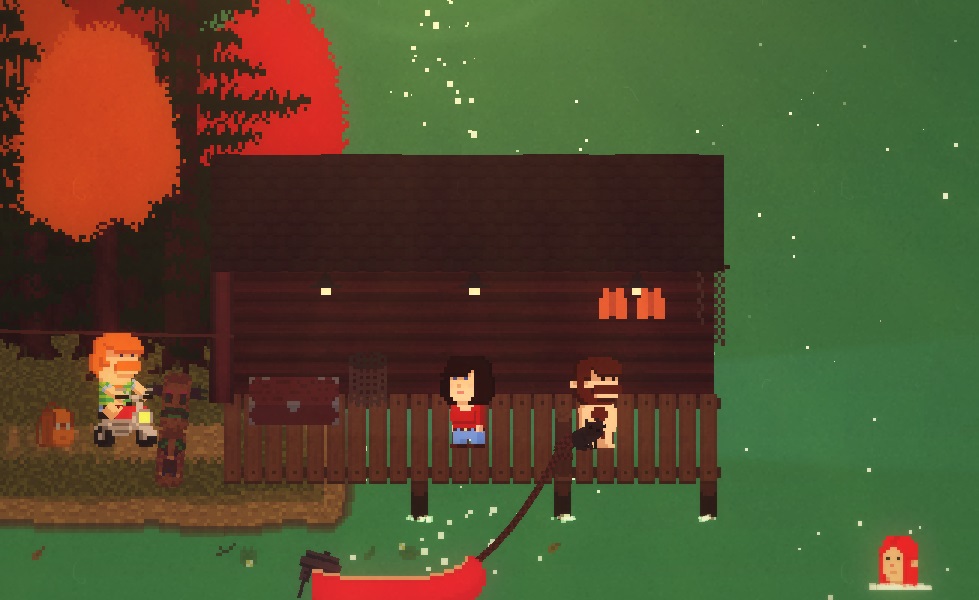
Comedy is often paired with horror. But not in videogames. At least, not successfully. That’s what makes Lakeview Cabin (2013) remarkable. Ripping the slasher-horror model of Friday the 13th (1980) almost wholesale, it gives you some time to hang out at a picturesque lakeside, going swimming, running around naked, and hacking at tree trunks. It’s silly for the sake of it, refreshingly open in its playfulness. Then some ditch-faced shit lurks out of the lake and cuts out your insides. That’s when the game begins proper: on the second try, it’s time to lay some traps, or you could just enjoy the little time you have left before the horrors come.
PuniTy (Farhan Qureshi)
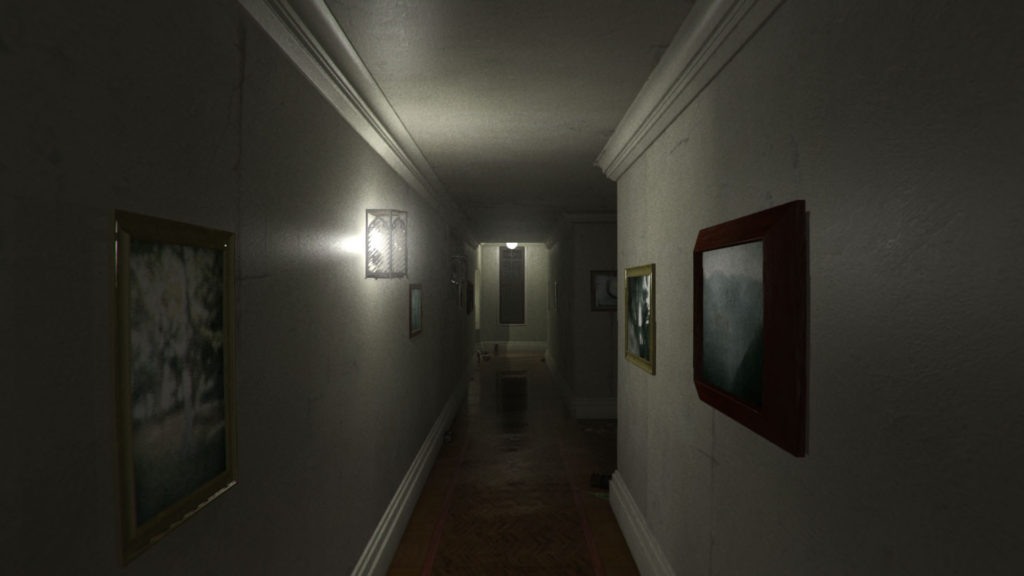
Look familiar? Yes, this is the Silent Hills teaser P.T. (2014) recreated by an eager fan, more or less. You walk up its corridor, around the corner, and past the bathroom of soon-to-come sickening horrors. But not everything is as you remember it from Hideo Kojima and Guillermo del Toro’s original. The creator of PuniTy has added some new surprises in with the expected ones. It’s up to you to happen across them. Get your hands at the ready to cover your eyes.
Imscared: A Pixelated Nightmare (Ivan Zanotti)

Before P.T. injected a desperate need for photorealistic domestic horror spaces into videogames, there was Imscared (2012). Unashamed of its gigantic pixels, it embraced them, using their muddiness as a way to create 3D spaces that, when cast in a dim light, seemed to move at the edges of your sight. The pixels are a big part of what makes the initial experience of the game work, as something haunts your periphery, but the game should also be commended for its after-party. When you’re finished with the game and close it down, you’ll quickly find out that it’s not quite finished with you.
1916 Der Unbekannte Krieg (DADIU Student Team)
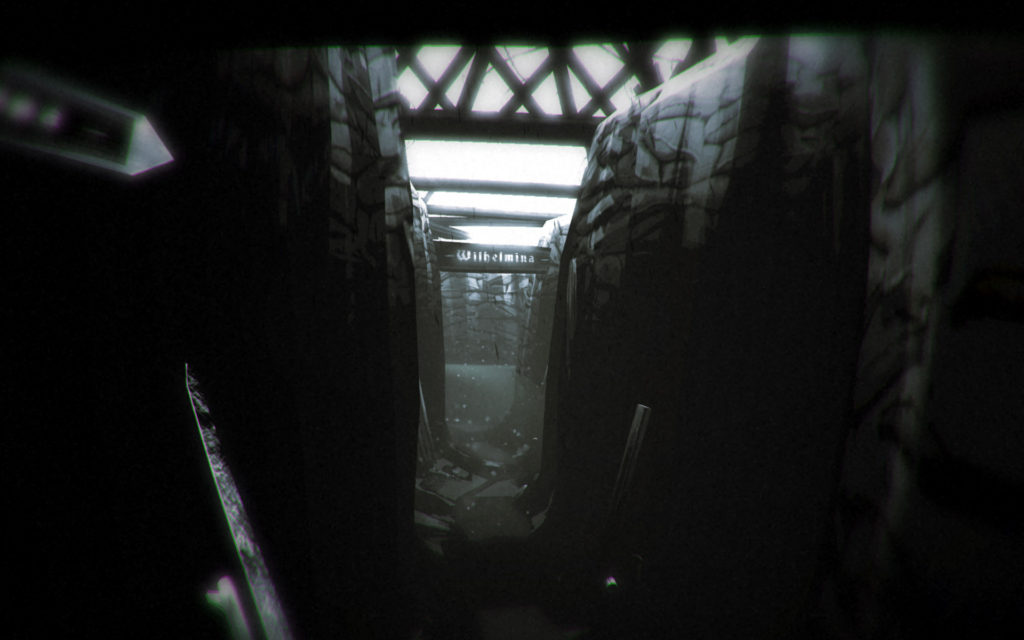
If you were to find out what 1916 Der Unbekannte Krieg (2011) was about before playing it you would think it ridiculous and probably scuttle off. It’s for the best that you only know that it plays on the horrors of World War I, then. In fact, it takes place in the trenches, where the floor is a bog and a thick gas hangs around your knees. You probably have shellshock. Yeah, that would explain what happens. Put it this way, the instantaneous death of going ‘over the top’ will soon seem like salvation.
Hide (Andrew Shouldice)
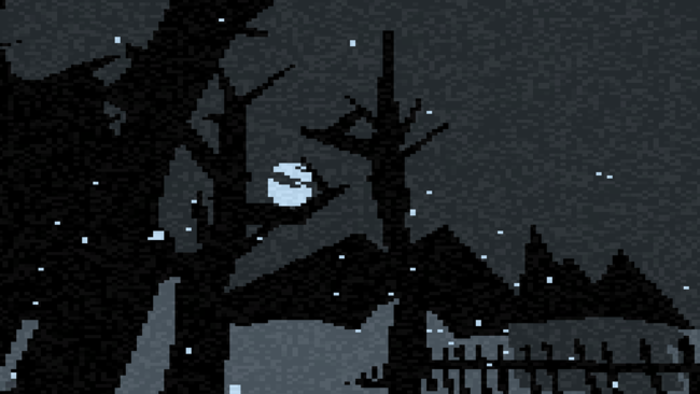
Hide (2011) has the same framework as that one viral Slender Man game, but puts a bit more thought into it. A word to sum it up would be “exhausting.” In the chill of a snowy night, you search for five notes while something stalks you. It has you tapping to sprint, your character breathing heavily, hardly able to get far without needing to slow down and catch their breath. And so when the shit hits the fan you can only crouch in a corner and hide, praying that it hasn’t seen you.
One Late Night (Black Curtain Studio)

It takes a long time for One Late Night (2013) to literally throw a ghoul at you. And it’s all the better for it. Taking place in a surprisingly confident replication of an office, it’s patient with you, as if going “Does this scare you? No? OK, how about this?!” At first, it’s eerie enough being alone in the office. Then a message appears on your monitor saying “I see you …” And then starts the paranoia. Before long you’re reading notes left by co-workers who have been through the same shit. A chair is flung through the air. Something’s in the bathroom. More and more paranormal signs show up while you desperately try to convince yourself that it’s an office prank. Sorry, but it’s not.
Deep Sleep (Scriptwelder)
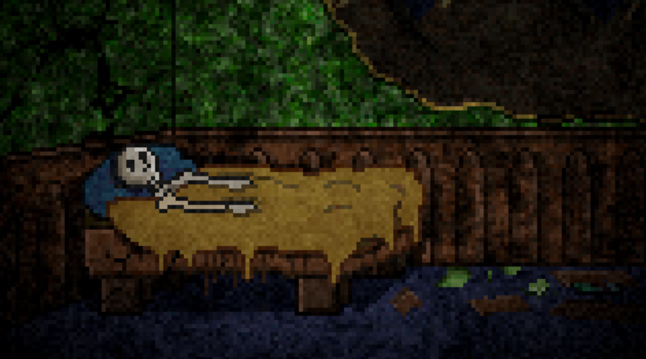
Taking place inside someone’s lucid dream, Deep Sleep (2012) is one of the creepiest point-and-click adventure games ever made. The words “Wake up” whispered through a phone are particularly chilling. But that’s only the start, as you venture further into this dark dreamscape, you’ll be chased through corridors by odd figures designed only to hurt you. But the direct terrors are secondary to the supreme concoction of the game’s eeriness, driven by a clever use of sound and a confidence in your own mind to project fear onto its pixels.
Yume Nikki (Kikiyama)
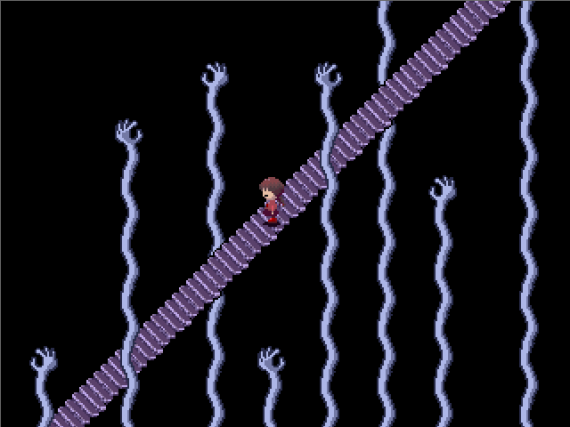
Yume Nikki came out of fucking nowhere in 2004. We still don’t really know who made this thing—next to nothing is known about designer Kikiyama. Yume Nikki exists in a void, a warped black crystal of broken dream spaces and surrealist logic that persists in confounding and startling the hell out of anyone who plays it. You can make shut-in protagonist Madotsuki try to leave her apartment, but she’ll just shake her head and refuse. But you can always go deeper into her dreams, digging through absurd ugly jumbles of RPGMaker level design and abrupt jump scares, meaningless goals and unusable objects, killable NPCs and indelible visions.
My Father’s Long Long Legs (Michael Lutz)

Situated somewhere between illustrator Emily Carroll and manga artist Junji Ito, Lutz’s second entry on this list is a horribly clear-eyed portrait of madness. The patriarch of your family has become obsessed with digging in the basement; what he’s digging for, and why, are answers you should uncover yourself. Again (or first; this comes before The Uncle Who Works for Nintendo) Lutz employs sound effects to eerie effect, and the game’s climax makes Emily Carroll-esque use of web-specific effects like scrolling and mouse movement. Maybe that sounds dry; I promise you it’s not.
Lisa The First (Austin Jorgensen)
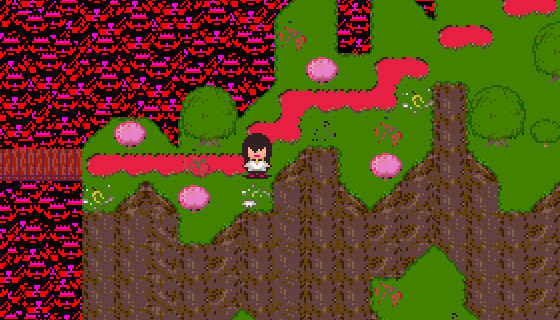
Everything in Lisa The First (2012) is filthy. Puke and bile covers the walls. Trash is thrown about in disarray. Press Z at a toilet and Lisa will barf into it. This is filth horror at its most vile. At the heart of it is Lisa’s gross and abusive father. He reoccurs across the landscape of her mind as she descends into madness. Ropes and bile bound her as she tries to escape the room her father locks her into. But in the end it’s no use. Creator Austin Jorgensen uses a combo of textural sludge and disturbing music to manufacture the horror tone in Lisa The First, which is something he transfers to the 2014 sequel, Lisa The Painful.
Power Drill Massacre (Puppet Combo)
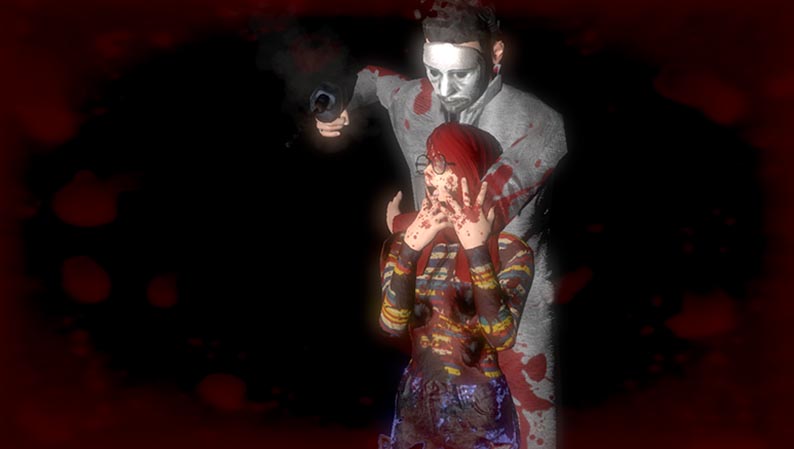
There are way too many free horror games that involve walking around a maze with a flashlight while some dick with a knife stalks you. Many of them are bad. Few are worth even a flake of your skin. But Power Drill Massacre is different. Well, not really, not exactly—it has a grindhouse aesthetic, that’s about it. But there’s something about the expressionless mask of its killer and the ferocity of his attacks that scares the living shit out of most who play it. Like, properly. Not the standard YouTube scream—it’s a game capable of a genuine and sudden fright. Knowing that it’s coming on subsequent playthroughs puts your heart in your throat. It’s a thrill that not many horror games are able to reach. And it’s one that shouldn’t exist within this tired horror game mold. Yet it does.
Knossu (Jonathan Whiting)
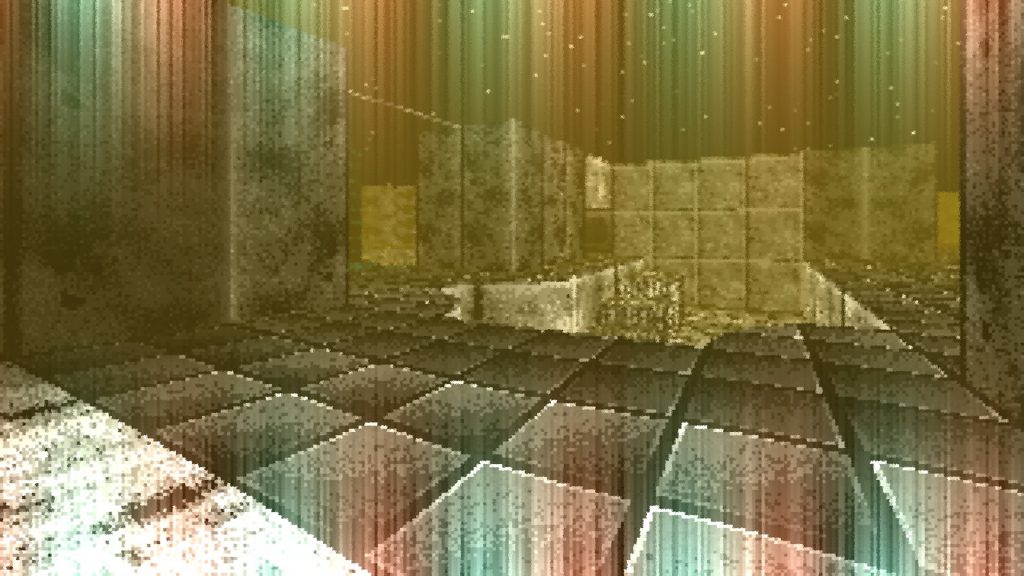
Buildings can be scary. Imagine if you walked out of a tunnel into an open plaza, and upon turning around, the tunnel you just emerged from had disappeared. Or, you walked along a lengthy, empty road for an hour, nothing but terraced houses at your side, but when turning around to look back at the corridor behind you there was a huge concrete wall at the tip of your nose. Where the fuck did that come from?! It’s this kind of architecture horror that Knossu (2015) thrives on. You will get lost in its labyrinth, not for its complexity, but for its many illusions.
Tonight You Die (Duende Games)
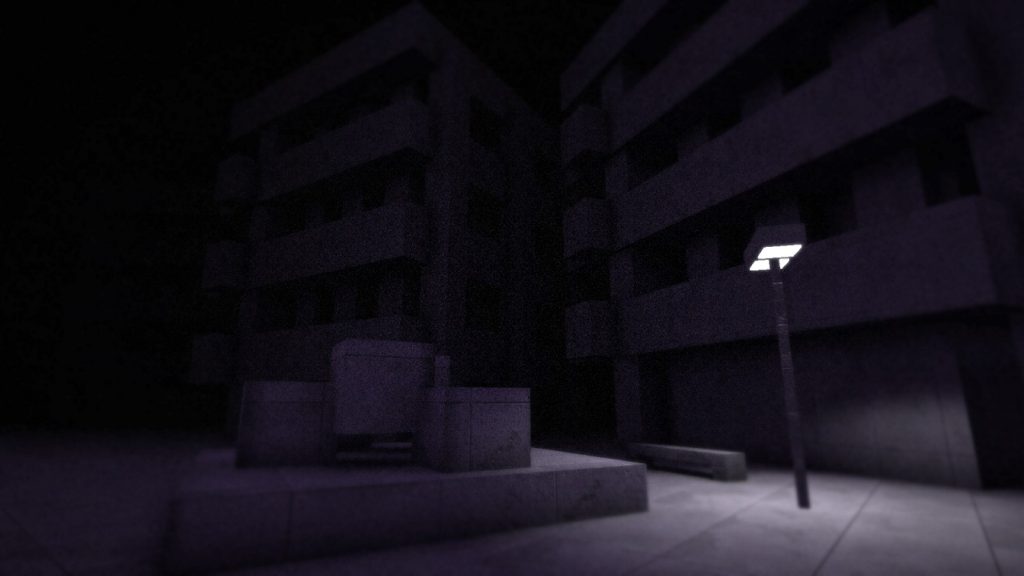
A brutalist horrorscape seen at night. That’s where Tonight You Die (2015) takes you. Do as you wish: stay perfectly still, explore its multi-storey car park, circle the urban glossary. It doesn’t really matter what you do. You will die anyway. Knowing that may take away the terror, but when it steadily comes for you, like a noise gnawing inside your head, you will probably find yourself jumping at nothing, cursing your limited vision. It’s coming …
Bad Dream: Series (Desert Fox)

Ever wandered around town at the dead hour of 2AM? There’s a disquieting silence that comes with it—like something beating noiselessly against your ears. The dilapidated, black-and-yellow empty towns of the Bad Dream series embody that entire experience. They seem to exist in a Silent Hill-like dimension where, years ago, a series of depraved pranksters set up traps for you to prod. And that’s one of the best aspects of the series: time and again, the games draw attention to your body presence in a format that typically forgoes it (the point-and-click adventure). The series uses the distance you put between yourself and the games as a chance to bring you right in and strike at horror. The fingers of your cursor will be suddenly snipped by a pair of scissors—proper “oh shit” moments.
SCP — Containment Breach (Undertow Games)

Yes, it does have a dirty-rag of a Teletubby chasing you around, but give it a break. The central blink mechanics of SCP — Containment Breach are actually put to great use. At one point you need to time your blinks so that a deadly statue that moves at high speed when not in your sight doesn’t get you. But later on in the game, this blink mechanic is inverted, as another deadly creature will kill you if you look at its face—that’s when you’ll want to shut your eyes and move around blindly. What’s principally horror stodge actually proves to be thoughtfully designed and lends itself to prolonged bouts of terror.
Her Pound of Flesh (Liz England)
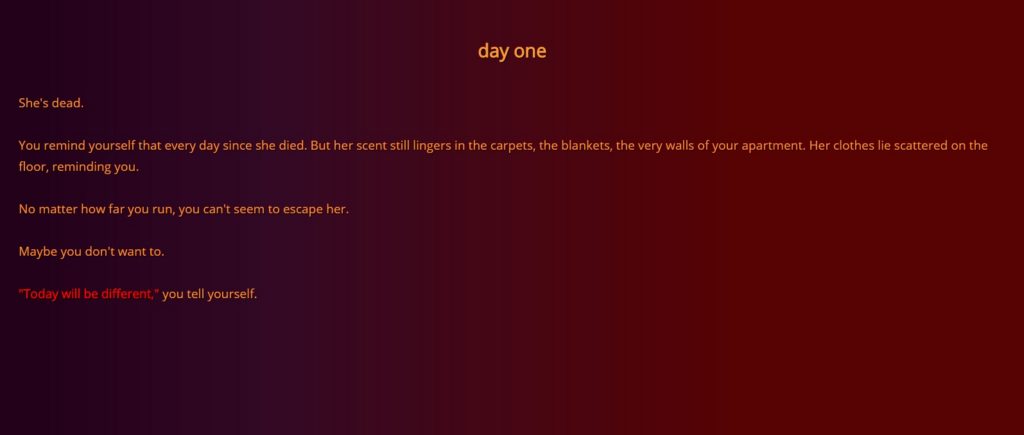
Like Porpentine’s work and Tom McHenry’s gonzo Horse Master, Liz England’s Her Pound of Flesh is a heartfelt, disgusting piece of work. I don’t have the space here to try to dissect why Twine has attracted so many emotive body horror games: I can only suggest you play them all. Her Pound of Flesh is about heartache, in the end, but heartache filtered through a gloriously grotesque prose sensibility.
